There is something liberating about spending time outside on a deck. Among the myriad choices available, two prominent contenders stand out: Wood is still a popular choice, but new technologies are making WPC decking more attractive and sustainable. Each material possesses distinct characteristics, catering to different preferences and needs. This article will make comparison between wood decking and composite decking to help you making choice for your outdoor oasis.
Table of contents:
Understanding Wood Decking and WPC Decking
WPC Decking
WPC(Wood Plastic Composite) decking, a modern alternative to traditional wood decks, is usually comprised of a mix of recycled wood flour and recycled plastic materials, bound by resins. This composition creates a sturdy, low-maintenance material that aims to emulate the natural appearance of wood while offering enhanced durability.
There is a great variety of composite decking made from recycled content, and more options are likely to make an appearance in the near future. Like wood, they range from lower-end to middle-grade to high-end.
Wood Decking
Wood decking, a classic choice for outdoor spaces, encompasses a range of natural wood types such as cedar, redwood, or pressure-treated lumber. Its charm lies in the authentic, warm appeal and the variety of wood species available, each offering unique aesthetics. The traditional appeal of wood decking caters to those who appreciate its natural beauty, with the added benefit of being relatively easier to repair and customize.
Pros and Cons of WPC Decking
| Pros | Cons |
|
|
Pros and Cons of Wood Decking
| Pros | Cons |
|
Issues with natural wood decking include vulnerability to hungry insects and rot, as well as the frequency and cost of general maintenance. Wood decks should be thoroughly cleaned annually, and should be refinished as soon as the color starts to fade—usually every few years. |
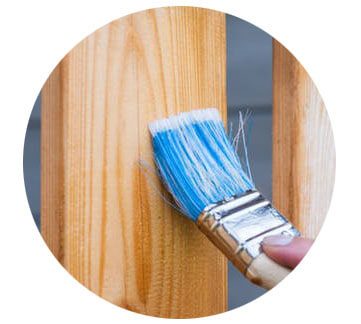
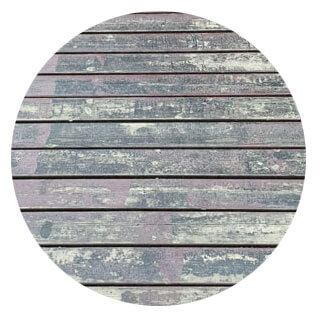
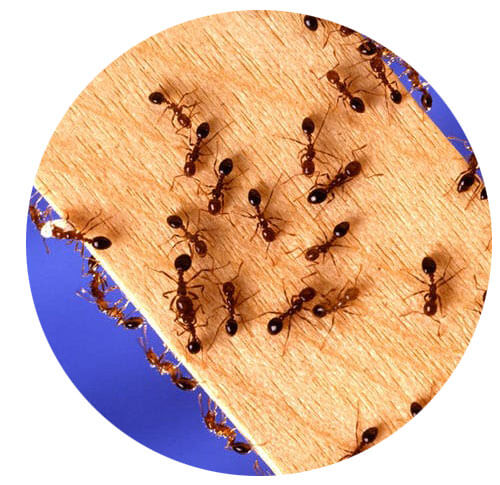
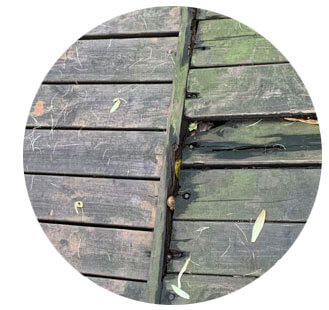


Comparison Between Wood Decking and WPC Decking
| Characteristics | WPC | Wood/Plywood |
| Moisture Resistance | Waterproof | Water absorptive |
| Decay/Rot Resistance | Antisepsis | Rot except special treating |
| Termite Resistance | Yes | None |
| Split Resistance | No Cracked | Cracked by weathering effect |
| UV Stability | High UV stable | Low UV stable |
| Deformation | None | Yes, because of weather |
| Painting/Polishing | No need | Yes |
| Durability | 10-20 years | 3-5 years |
| Outdoor Adaptability | Excellent | Poor, need periodic treatment |
| Environmental Friendliness | 100% Recyclable | Consume woods |
| Installation | Fast and easy | – |
Cost Analysis
A. Initial Costs
Wood Decking: Wood decking generally presents a more affordable initial cost compared to composite materials. The lower upfront investment is appealing to those working within budget constraints, offering a cost-effective choice for outdoor projects.
WPC Decking: Typically, composite decking tends to have a higher initial cost compared to wood decking. The upfront investment is often greater due to the manufacturing process and the material’s durability, which may result in a higher price per square foot.
Certain woods are more expensive than others, and composite decking ranges in price, as well. This chart provides a vary general cost comparison of various decking materials.
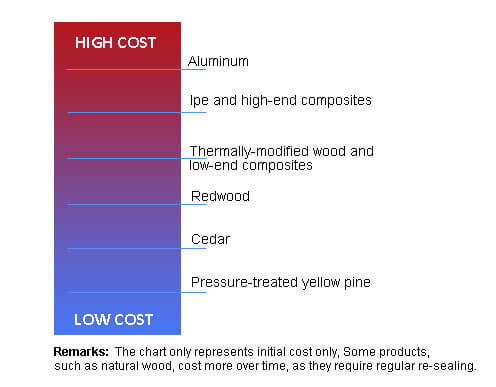
B. Long-Term Expenses
Wood Decking: Despite the lower initial cost, the long-term expenses of wood decking can be higher due to ongoing maintenance needs, including regular staining, sealing, and potential repairs. These maintenance efforts can accumulate costs over the deck’s lifespan.
WPC Decking: While some composite decking may be more expensive initially, its low maintenance may outweigh the initial upfront cost over the lifespan of the deck which can lead to cost savings in the long run. It generally reduces expenses associated with staining, sealing, and repairs, contributing to a lower total cost of ownership over time.
Conclusion
The choice between WPC decking and wood decking is not merely a matter of personal preference but a decision influenced by various factors. Each material brings its own set of advantages and limitations, catering to diverse needs and preferences for outdoor spaces. In making the decision, factors such as budget, long-term maintenance considerations, desired aesthetics, and the environmental impact must be carefully weighed. It’s crucial to align the chosen material with individual preferences, lifestyle, and the intended use of the deck, ensuring a selection that best meets the unique requirements of each homeowner or builder.
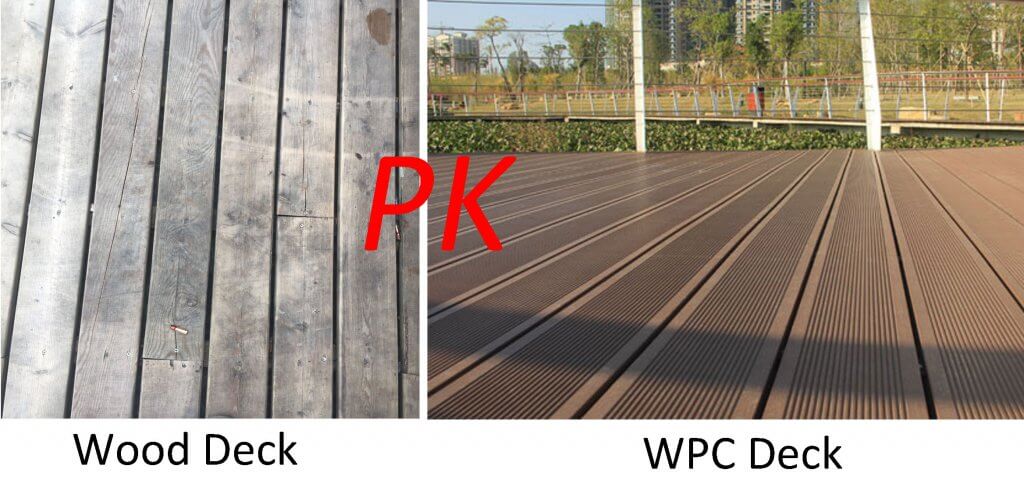
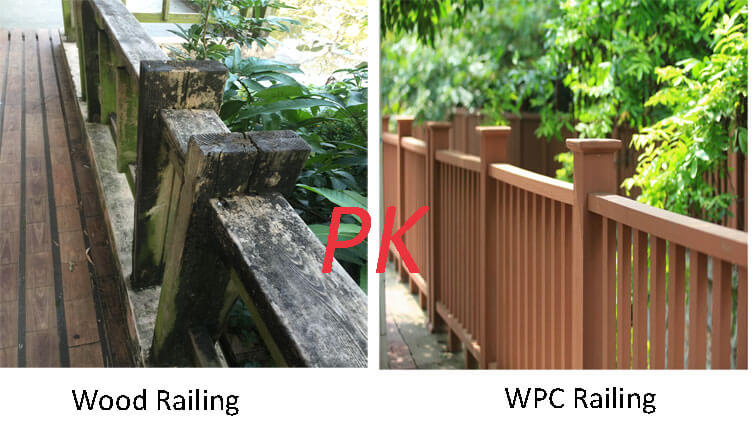
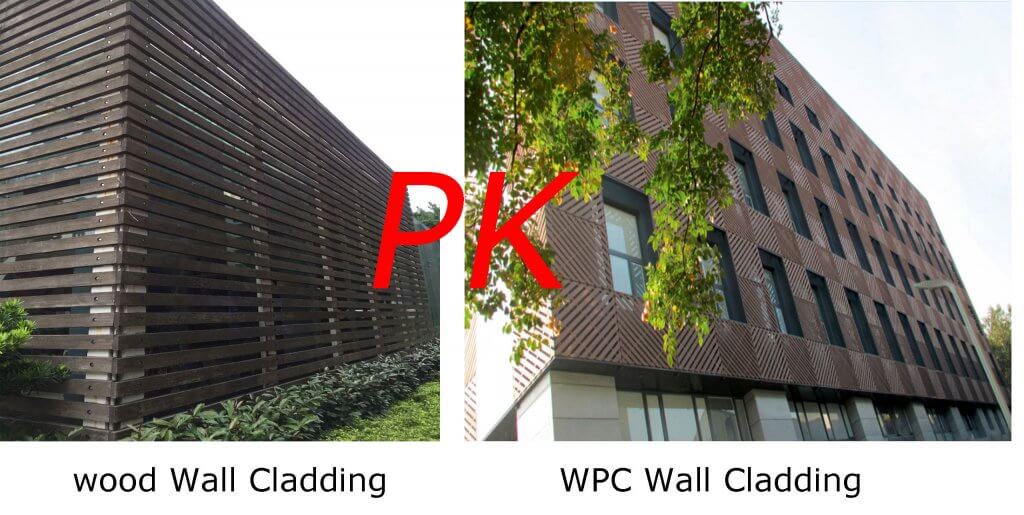

Bongywood Wood Plastic Composite
Guangdong Bangying New Building Materials Co., Ltd. is a professional manufacturer specializing in the R&D, production, and sales of WPC (Wood Plastic Composite) materials, our products include composite decking, capped composite decking, WPC Wall Panel, WPC Railing & Fencing, WPC Pergola & Gazebo, WPC Chairs & Bench, WPC Flower Planter Pots, etc.
Leave a Reply

